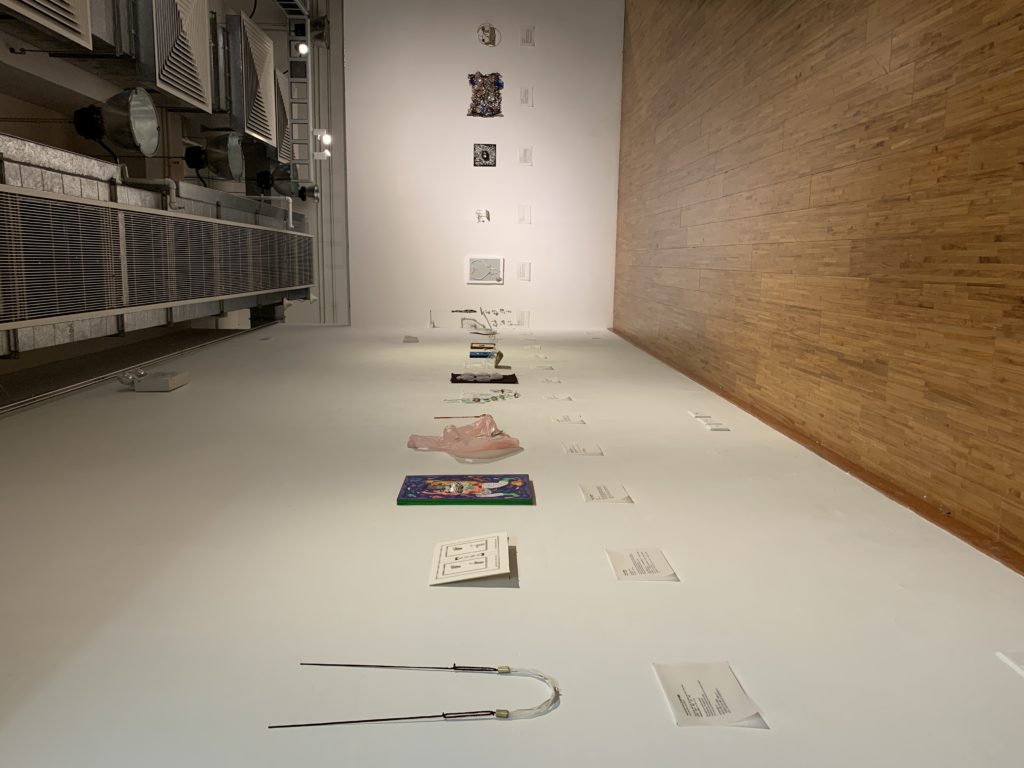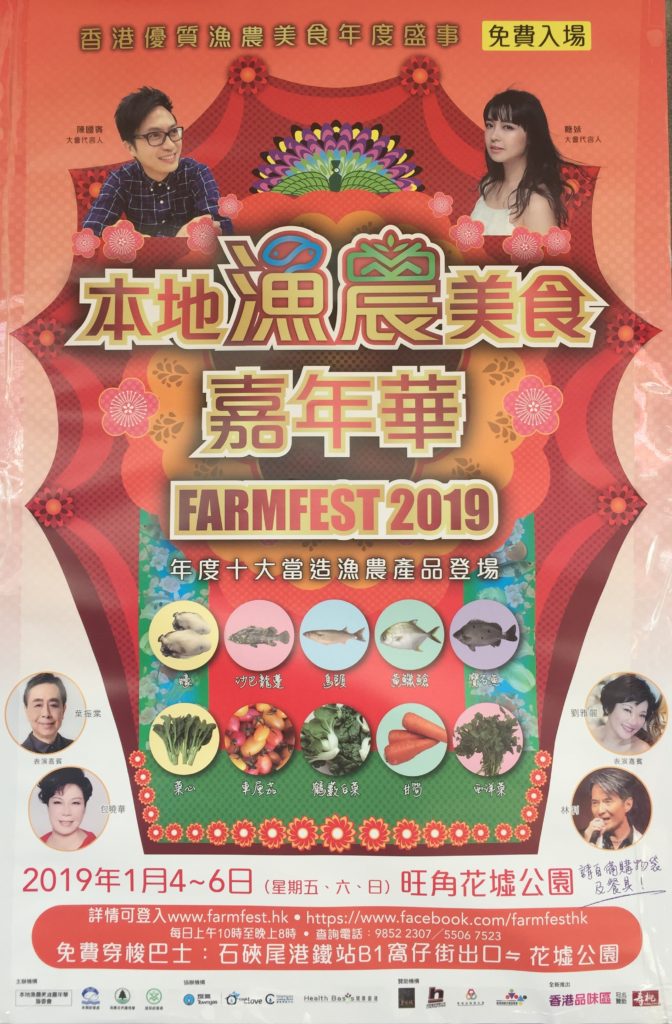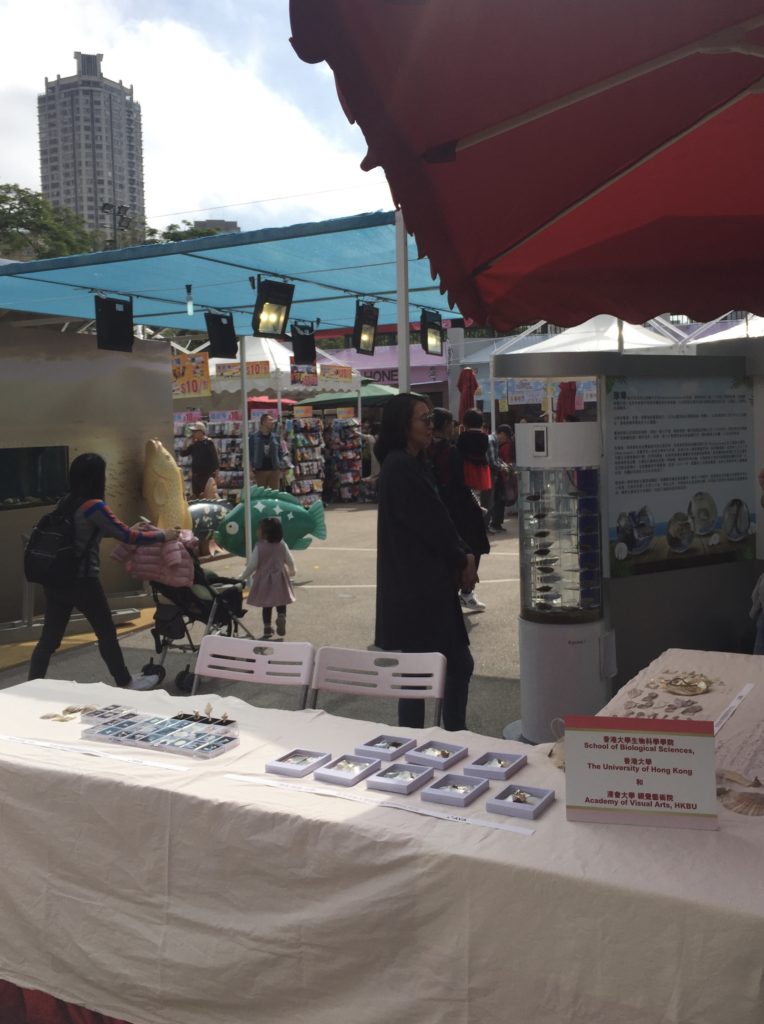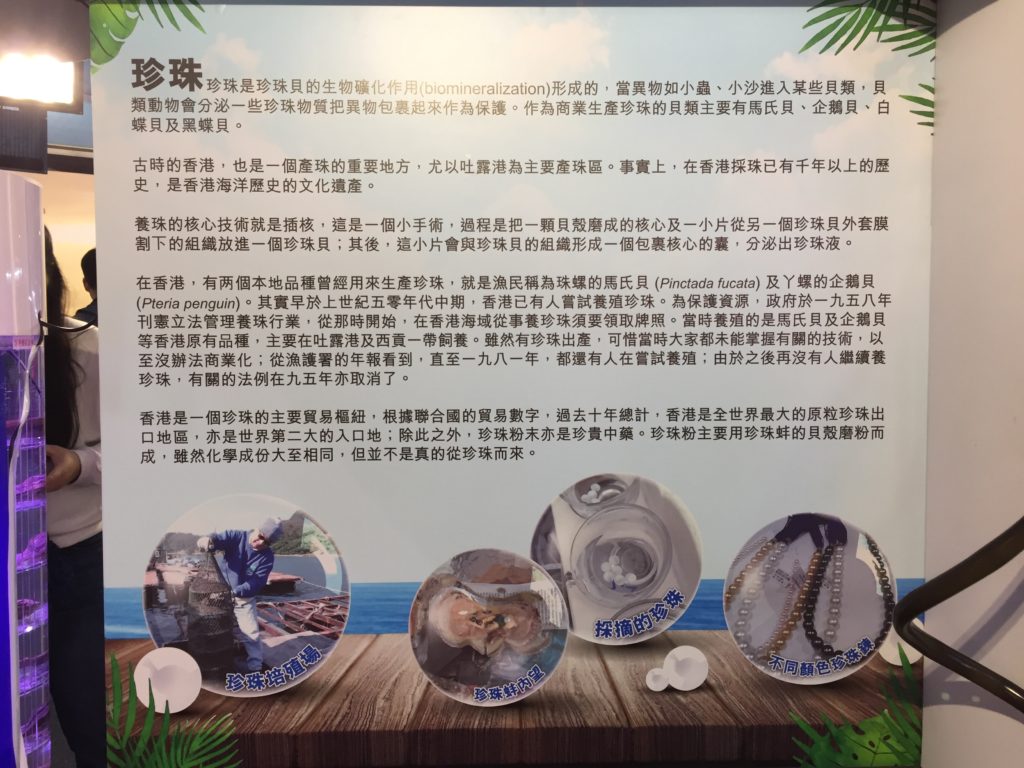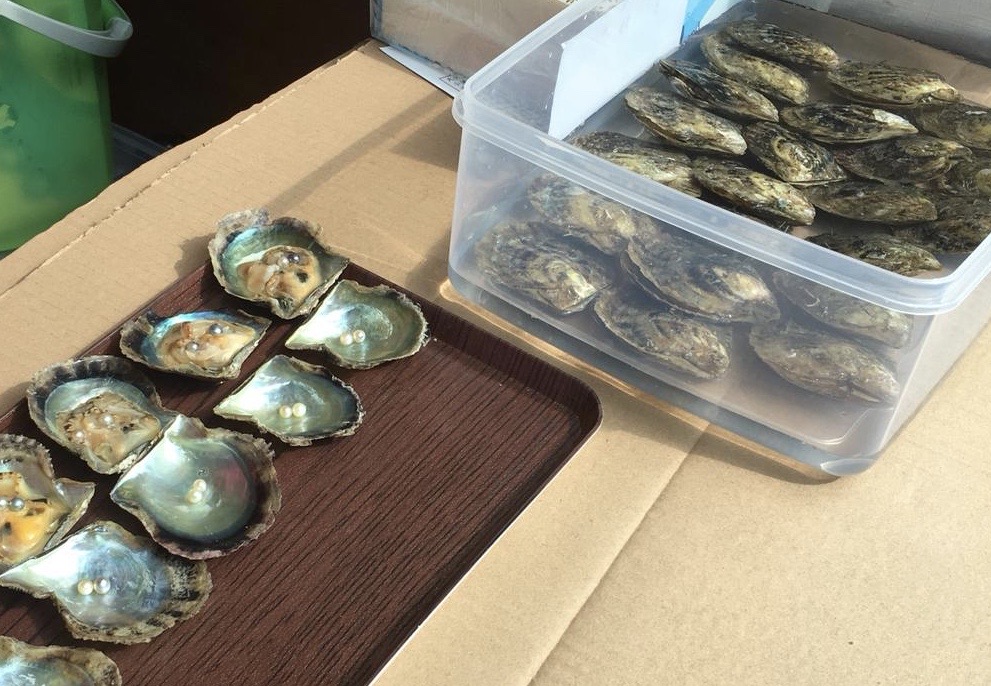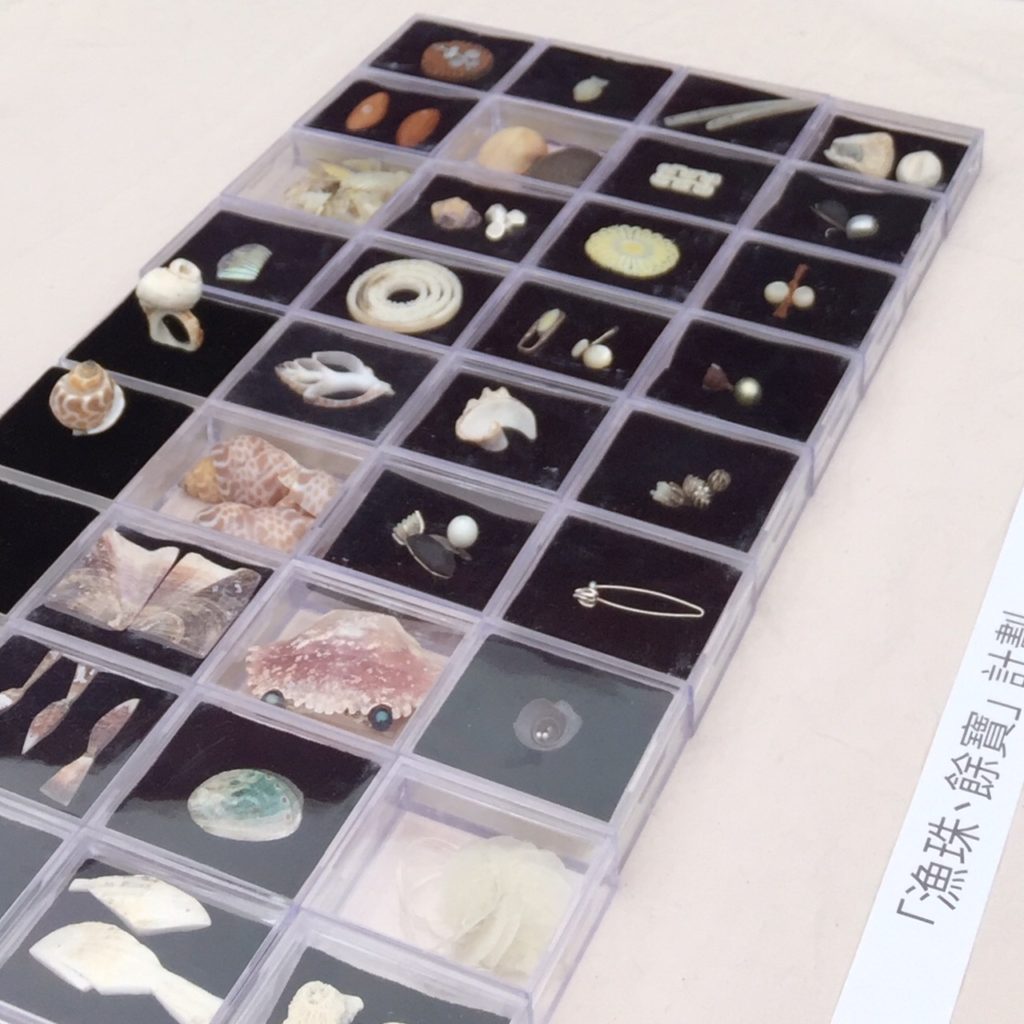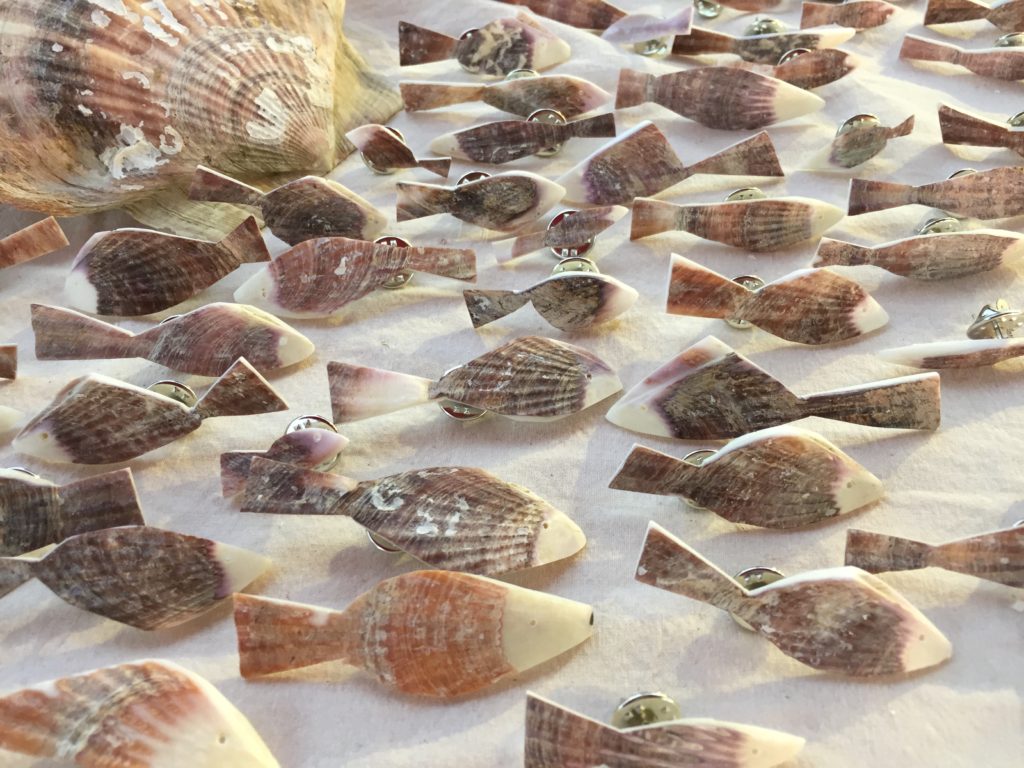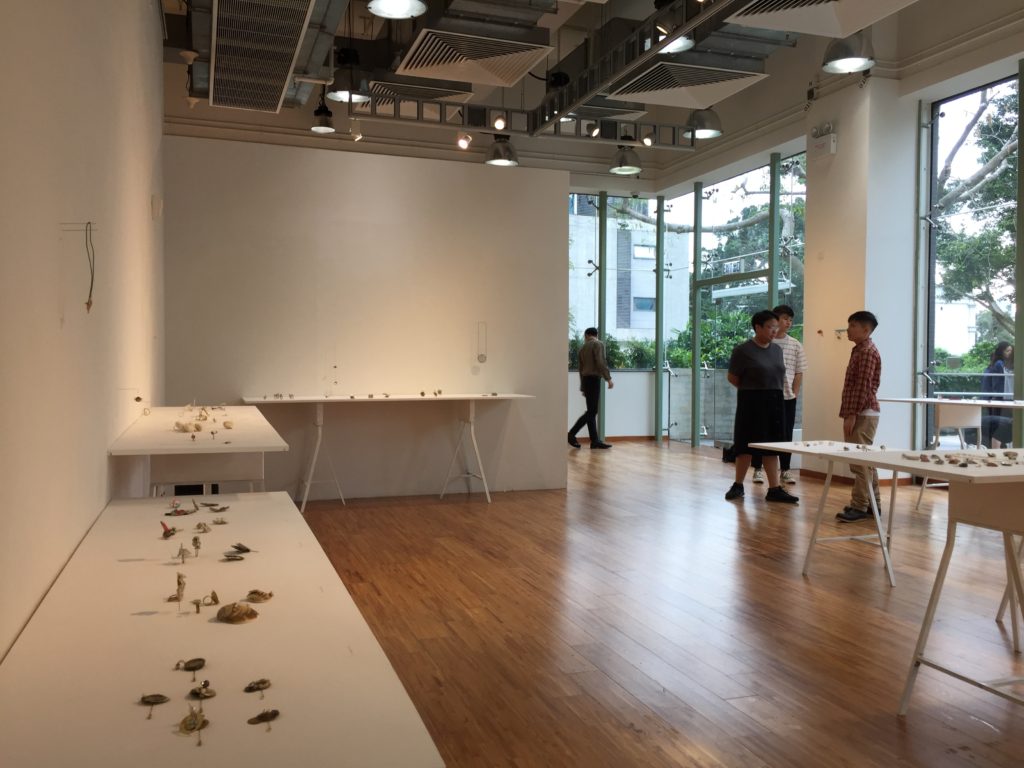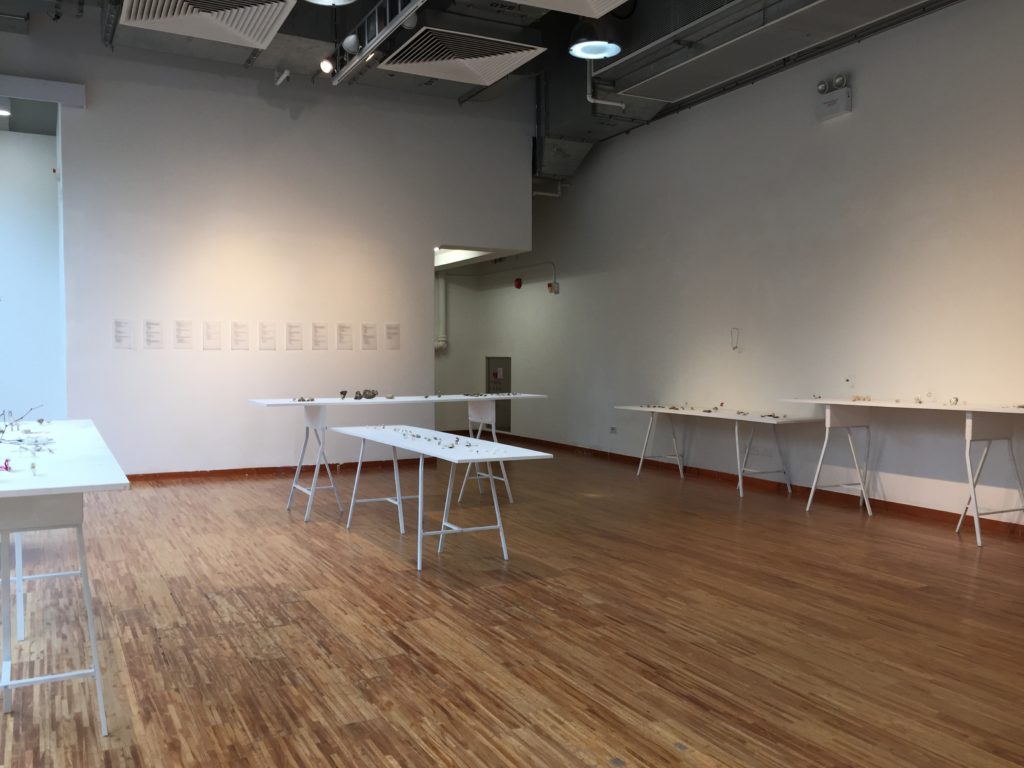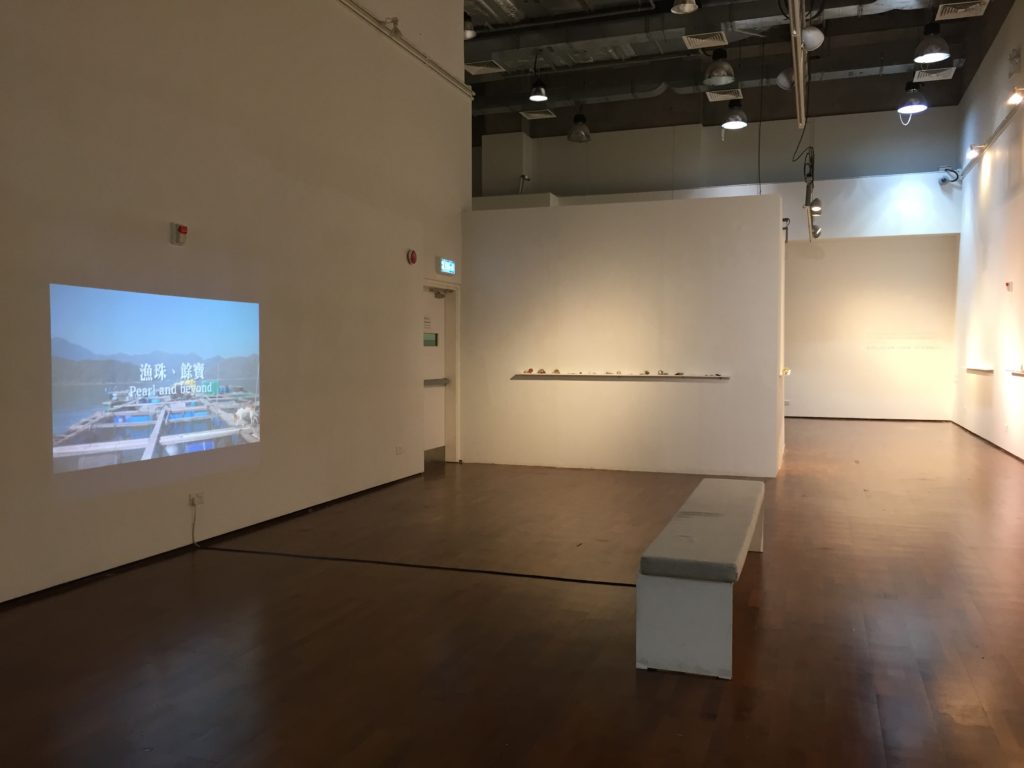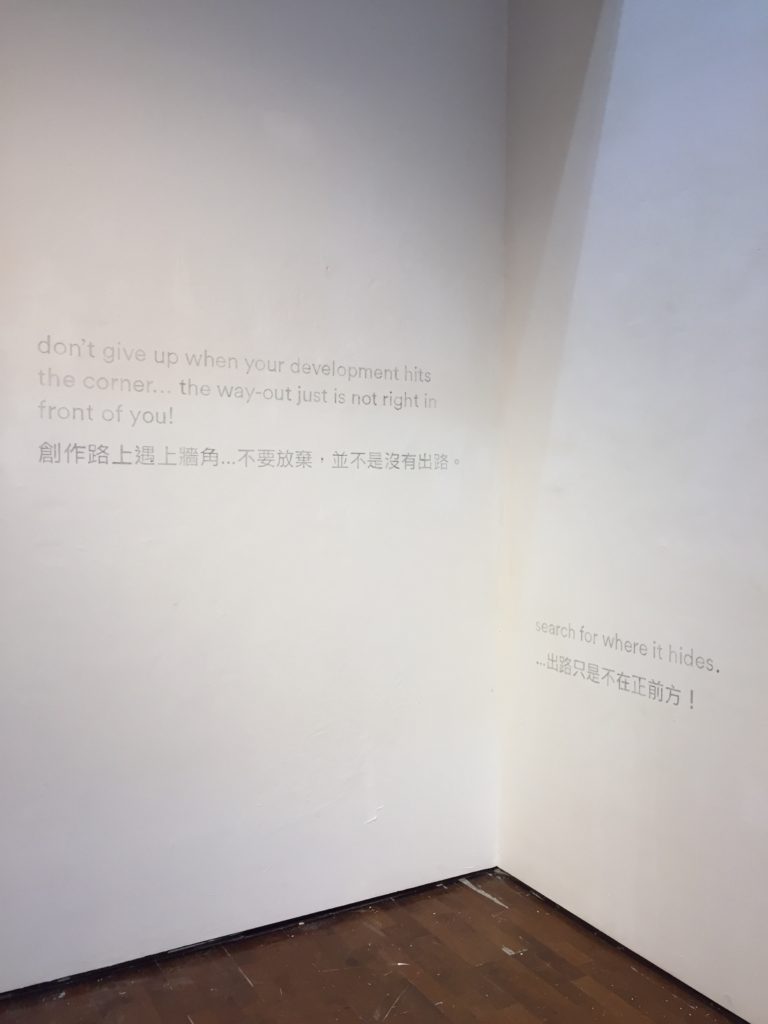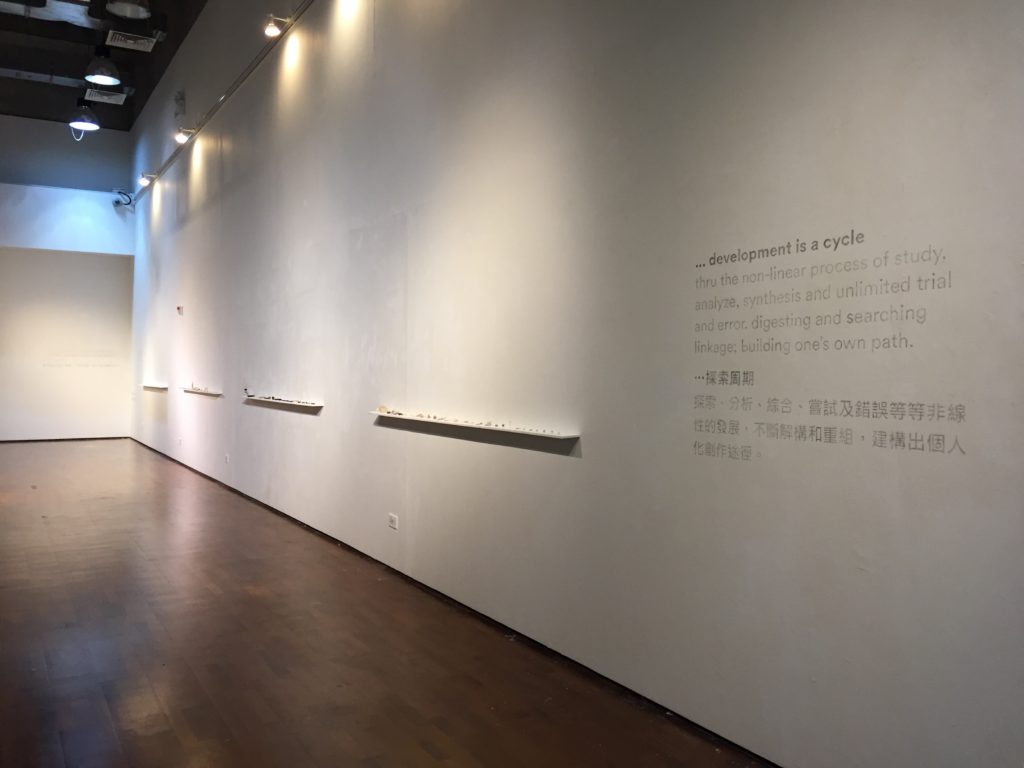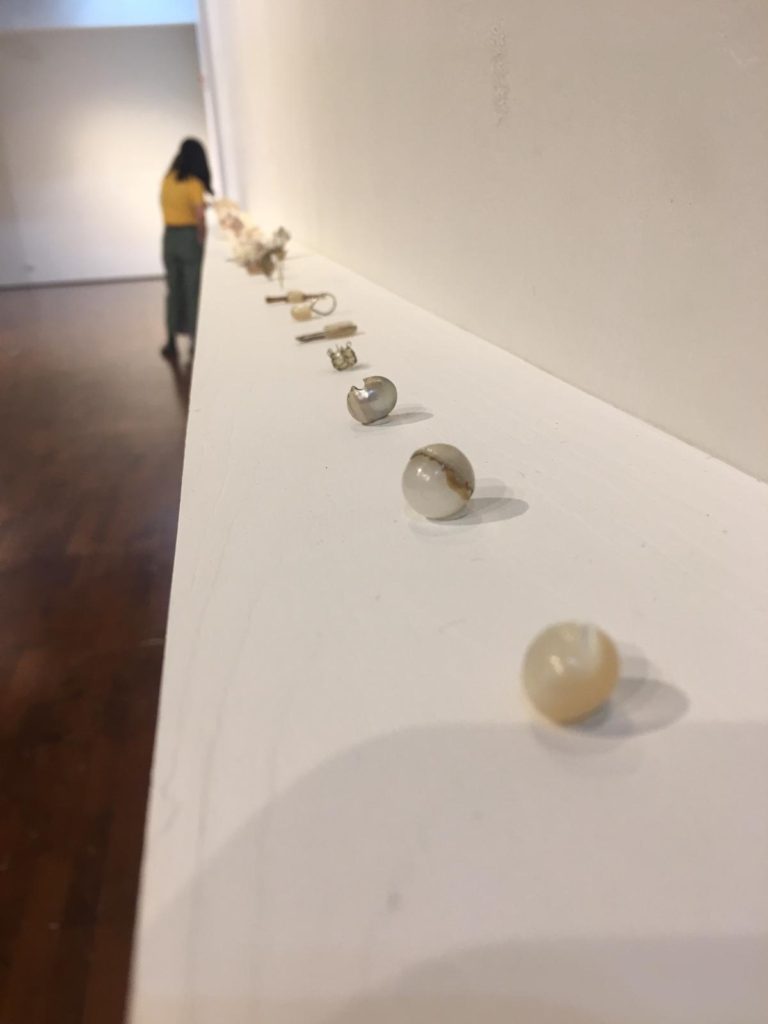“Pearl and Beyond” exhibition and shell for shell exchange “漁珠、餘寶” at farmfest 2019
“Pearl and Beyond” shell for shell at Farmfest — Exchange your pearl shell from local water, for a small shell object free of charge.”漁珠、餘寶” 殻換殻 — 以香港海水養殖珍珠殻可免費換領一件貝殻小件。
“Pearl and Beyond” exhibition “漁珠、餘寶” at CVA 2019
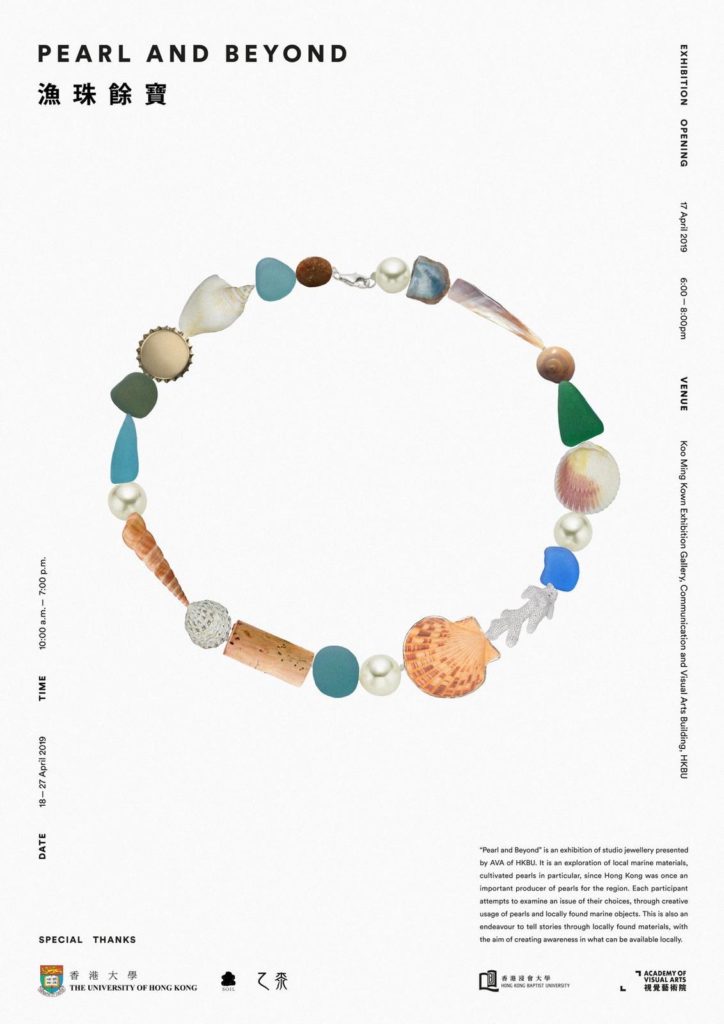
Forewords to Exhibition
Shells and other marine found objects had been used in the making of jewellery for thousands of years. Pearl, in particular, has a long history with Chinese jewellery and culture in general. Historically, Hong Kong was once a prolific pearl-producing area. Pearls from the Tai Po area were highly treasured, with the central government managing harvesting. Due to ecological and political reasons, pearl-harvesting within Hong Kong waters all but disappeared a few hundred years ago. In recent decades, there have been efforts in reviving this local industry, with varying levels of success. Challenges are not only in the cultivation of pearls, but also in developing rich business and cultural environments surrounding this gift from nature.
The Pearl and Beyond exhibition is an exploration of utilizing locally harvested pearls and marine materials in the making of jewellery pieces, under the broad theme of sustainability. Students and alumni from the Academy of Visual Arts attempt to explore issues of their own picking, through the vehicles of pearls from a Hong Kong farm, and other marine found objects. Although themes vary, the hands-on approaches are remarkably consistent. Their journeys take them through concerns for the environment, finding beauty buried within, gaining awareness of immediate surroundings, and challenging traditional intrinsic values.
Materials chosen and fabrication techniques of an art form often reflect cultural development of the region. Utilizing locally farmed pearls and shells of their oyster as raw materials is an attempt to reconnect with local culture and history. This also indirectly supports a sustainable local industry. In addition, other objects found from local marine environment, or even from kitchen leftovers, are being incorporate, in an effort to strengthen connections to local issues.
Part of the movement in sustainability is to know where things come from, how they are produced and most importantly what impact our actions have on our environment.That can mean using materials that can be traced back to the source, and to ensure they have been produced in a sustainableway. Pearls for this exhibition were mostly cultivated from fishing farms that were once non-profitable, and there is no need to feed these oysters while they grow. Pearl oysters have the added benefits of being effective filters for our ocean, thus having the potentials in cleaning up our harbours and bays while producing pearls. Together with the utilization of shells from kitchen leftover, we hope to show our support to this meaningful movement.
Ching Sze Yin, Cicy (Apr, 2019)
前言
人類早於舊石器時代已有利用貝殻製造飾物,而使用珍珠作為飾品也有上六千年的歷史 。西元前二千五百年,中國已經有珍珠交易。香港曾經是一個重要珍珠生產地,有一千年以上的採珠歷史,但數百年前因濫捕和其他原因而漸漸式微 。在近幾十年間,先後多次有不同人和團體努力試圖在香港海域恢復養殖珍珠。復養計劃要面對的困難重重,由環境因素到利益成本皆有,要恢復的不單是養殖珍珠,而是需要發展一個擁有各種合適條件的一個完整生態系统,包括養殖珍珠的地域、本地珍珠的經濟需求和有關的商業環境。
以可持續發展的設計為題,「漁珠、餘寶」首飾展覽,展示了視覺藝術院同學對香港養殖珍珠和本地不同海洋物料的探索。參展者試圖透過本地海洋物料的物質性和隱喻性訴說故事,各自就關心的議題,通過珍珠和海洋相關物料等進行創作,由個人處境、環保問題、不同定義的美、留心當下或對傳統價值觀的想法。縱使關心的問題各異,但同樣是以心和手,把海洋物料轉化成首飾作品,向公眾展示創作人對生活中種種問題的立場和態度 。
選擇物料和製作手法不單是為其物質性,功能性或裝飾性,它們更反映了地方文化, 是文化和歷史的載體,內含着深厚的符號意義。以傳統工藝手作為基礎,通過主題物料—本地養殖珍珠—開始切入探索 ,在香港四處找尋不同本地海洋物料,由貝殼到海沙、石頭、廚餘,甚至是海中飄浮的塑膠作完材料,一方面在尋找人和本土的種種連繫,另外亦希望展覽依循可持續發展的設計方向。
可持續發展的設計,是由關注物料來源,到生產方式對地球的影響,以及生產線上人們應有權利。生産過程中的每一個可持續發展細節,和成品同樣重要。就如本地養殖珍珠除了有助本土創作的獨特性和自主性發展外,更可利用到空置魚排,增加漁民收入以改善他們的生活, 增加年青人就業或創業的機會,有助完善一個珍珠工業的生態環境。再加上以海水養殖的珍珠貝是靠過濾海水進食水中的浮游物,不用額外供應飼料,更可淨化附近海水,有助改善水質。是次展覽主要使用本土物料創作首飾,展示了視覺藝術院的同學們關心地球,關心環境和關心他人而作出的小小努力。
程詩賢 (二零一九年四月)
“Pearl and Beyond” exhibition “漁珠、餘寶” at CVA 2020
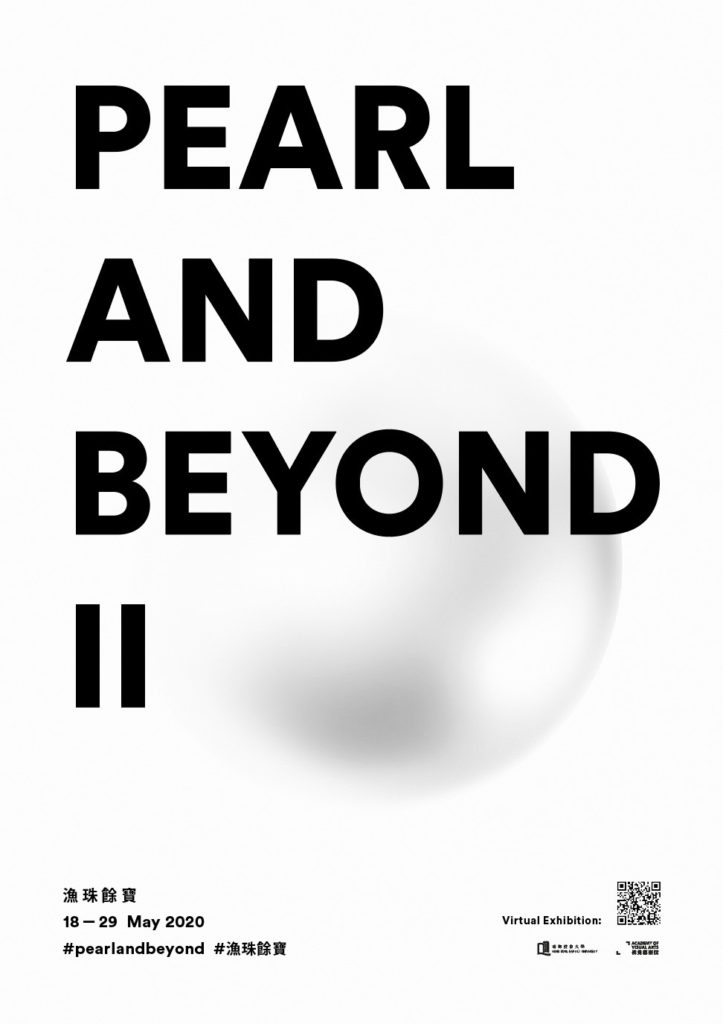
Forewords to Exhibition
This year’s Pearl and Beyond exhibition continues with the theme of sustainable development. It showcases works from students and alumni of the Academy of Visual Arts, using locally cultivated pearls and other locally found materials. The goal is to find linkages between ourselves and our surroundings.
Preparation of this exhibition coincided with outbreak of the virus. Participants had to adapt their themes to cope with the limitations imposed by social isolation. This brought about a unique opportunity. There was a lot less freedom to choose what to work with. Instead, one has to look around the house, and consider what was nearby. A greater focus emerged on the observation and study of leftovers from the kitchen, scrap pieces of fabric, single-use utensils, packaging materials etc. Themes like associated meanings of these materials, their manufacturing processes and ethical considerations, sustainability, how they intertwine with our daily life began to transpire.
This exhibition is thus a sharing of interpretations in the use of readily available materials, with the ideas captured and presented in forms of jewellery pieces. Through each participant’s own personal perspectives and thought processes, the original focus of locally cultivated pearl became multifaceted. Related themes were dissected, reassembled, summarized, and eventually materialized through the hands of the participants.
Ching Sze Yin, Cicy (May, 2020)
前言
今次再思「漁珠、餘寶」首飾展覽,延續這計劃以可持續發展的設計為題,展示了視覺藝術院首飾同學和畢業生們通過對香港養殖珍珠和本地不同物料的探索,尋找人和本土的種種連繫。
展覽籌備於肺炎疫情時期,各參展者由物料選擇到製作手法也有所改動以調合社會環境。對比於以往四出找尋不同本地物料,取而代之的是就地取材。廚餘、碎布、即棄餐具、包裝物料和家常用品等,剩餘物資和二手素材頓時成了觀察和再發掘的對象。由香港本地養殖珍珠作為思考的出發點,到尋找物料中隱藏的、被遺忘的珍貴元素,並以手作勞動賦予它們全新的價值和意義,向公眾展示創作人對生活中種種問題的立場和態度 。
啟發於本土物料,參展者各自以不同的角度探討,由物理性質或隱喻性、生產過程上的道德考慮、產品生命周期和環保意識的微妙關係、個人處境及價值觀等議題。縱使關心的問題各異,但同樣是以心和手,通過對物料觀察和對相關議題的思考,把資料重新整合,串連和歸納,並以首飾為載體,記載、展示和分享物化成器的意念。
程詩賢 (二零二零年五月)
